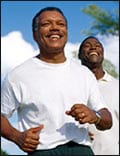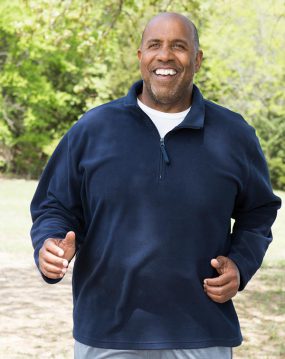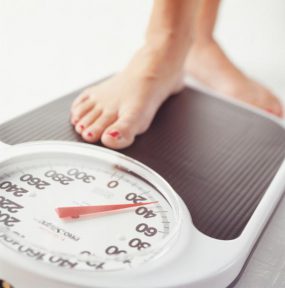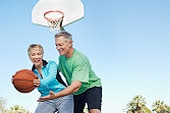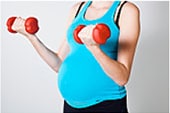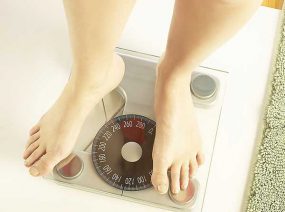Body Detox, Cleansing, & Metabolism Boosting



- About Detox and Cleansing
- Chellation
- Is It Possible to Unclog Your Arteries?
- Healthy Eating After 50
- Healthy Eating for Healthy Weight
- Herbals, Supplements, & Alternative Medicine
- Metabolism Boosting Food
A variety of “detoxification” (“detox”) diets and regimens—also called “cleanses” or “flushes”—have been suggested as a means of removing toxins from your body or losing weight. Detoxification may be promoted in many settings and may also be used in naturopathic treatment.
Detox programs may involve a variety of approaches, such as:
- Fasting
- Consuming only juices or other liquids for several days
- Eating a very restricted selection of foods
- Using various dietary supplements or other commercial products
- Cleansing the colon (lower intestinal tract) with enemas, laxatives, or colon hydrotherapy (also called “colonic irrigation” or “colonics”)
- Combining some of these or other approaches.
Bottom Line
There isn’t any convincing evidence that detox or cleansing programs actually remove toxins from your body or improve your health. Weight loss on a detox diet may be because these diets are often very low in calories.
If you want to protect yourself from environmental hazards or control your weight, visit the resources under General Information below. There’s information supported by research that can help you reach your goals.
back to top
Safety
Some of the products and procedures used in detox/cleansing programs may be harmful to your health.
- The U.S. Food and Drug Administration (FDA) and Federal Trade Commission have taken action against several companies selling detox/cleansing products because they contained illegal, potentially harmful ingredients; were marketed using false claims that they could treat serious diseases; or (in the case of medical devices used for colon cleansing) were marketed for unapproved uses.
- Juices that haven’t been pasteurized or treated in other ways to kill harmful bacteria can make people sick. The illnesses can be serious in children, elderly people, and those with weakened immune systems.
- Drinking large quantities of juice may be risky for people with kidney disease because some juices are high in oxalate, which can worsen kidney problems.
- People with diabetes should follow the eating plan recommended by their health care team. If you have diabetes, consult your health care provider before making major changes in your eating habits, such as going on a detox diet.
- Diets that severely restrict calories or the types of food you eat usually don’t lead to lasting weight loss and may not provide all the nutrients you need.
- Colon cleansing procedures may have side effects, some of which can be serious. Harmful effects are more likely in people with a history of gastrointestinal disease, colon surgery, kidney disease, or heart disease.
- Detoxification programs often include laxatives, which can cause diarrhea severe enough to lead to dehydration and electrolyte imbalances.
- Fasting can cause headaches, fainting, weakness, dehydration, and hunger pangs.
Source: NCCIH, NIH

Do detox diets offer any health benefits?
Answer From:
Katherine Zeratsky, R.D., L.D.
(Mayo Clinic).

Detoxification (detox) diets are popular, but there is little evidence that they eliminate toxins from your body.
Specific detox diets vary — but typically a period of fasting is followed by a strict diet of raw vegetables, fruit and fruit juices, and water. In addition, some detox diets advocate using herbs and other supplements along with colon cleansing (enemas) to empty the intestines.
Some people report feeling more focused and energetic during and after detox diets. However, there's little evidence that detox diets actually remove toxins from the body. Indeed, the kidneys and liver are generally quite effective at filtering and eliminating most ingested toxins.
So why do so many people claim to feel better after detoxification? It may be due in part to the fact that a detox diet eliminates highly processed foods that have solid fats and added sugar. Simply avoiding these high-calorie low-nutrition foods for a few days may be part of why people feel better.
If you're considering a detox diet, get the OK from your doctor first. It's also important to consider possible side effects. Detox diets that severely limit protein or that require fasting, for example, can result in fatigue. Long-term fasting can result in vitamin and mineral deficiencies.
Colon cleansing, which is often recommended as part of a detox plan, can cause cramping, bloating, nausea and vomiting. Dehydration also can be a concern.
Finally, keep in mind that fad diets aren't a good long-term solution. For lasting results, your best bet is to eat a healthy diet based on fruits and vegetables, whole grains, and lean sources of protein.
If you do choose to do a detox diet, you may want to use it as a way to jump-start making healthier food choices going forward every day.
Source: Mayo Clinic
back to top
Chellation
Chelation is a chemical process in which a substance is used to bind molecules, such as metals or minerals, and hold them tightly. Chelation has been used to rid the body of excess or toxic metals.

Chelation for Coronary Heart Disease
Coronary heart disease is a leading cause of death among both men and women in the United States. Lifestyle changes (such as quitting smoking), medicines, medical and surgical procedures, and cardiac rehabilitation (a program consisting of education, counseling, and exercise training) are among the mainstays of conventional treatment. Some heart patients also turn to chelation therapy using disodium EDTA (ethylene diamine tetra-acetic acid), a controversial complementary health approach. The use of disodium EDTA for heart disease has not been approved by the U.S. Food and Drug Administration (FDA). Nevertheless, about 111,000 adults in the United States used chelation therapy as a form of complementary medicine in the previous 12 months, according to a 2007 national survey.
Chelation is a chemical process in which a substance is used to bind molecules, such as metals or minerals, and hold them tightly. Chelation has been used to rid the body of excess or toxic metals. It has some uses in conventional medicine, such as treating lead poisoning or iron overload. When used as a complementary treatment for heart disease, a health care provider typically administers a solution of disodium EDTA, a man-made amino acid, in a series of infusions through the veins. A course of treatment can require 30 or more infusions of several hours each, taken weekly until the maintenance phase. Patients also typically take high-dose pills of antioxidant vitamins and minerals.
To determine whether chelation therapy, with or without high-dose vitamins and minerals, may be useful, NCCIH and the National Heart, Lung, and Blood Institute sponsored the Trial to Assess Chelation Therapy (TACT), the first large-scale, multicenter clinical trial on chelation therapy in people who have had heart attacks.
Bottom Line
-
Overall, TACT showed that infusions of disodium EDTA chelation therapy produced a modest reduction in cardiovascular events. However, further examination of the data showed that chelation therapy benefitted only the patients with diabetes.
-
Patients with diabetes, who made up approximately one-third of the 1,708 TACT participants, had a 41 percent overall reduction in the risk of any cardiovascular event; a 40 percent reduction in the risk of death from heart disease, nonfatal stroke, or nonfatal heart attack; a 52 percent reduction in recurrent heart attacks; and a 43 percent reduction in death from any cause. In contrast, there was no significant benefit of EDTA treatment in participants who didn’t have diabetes.
-
The TACT study team also looked at the impact of taking high-dose vitamins and minerals in addition to chelation therapy. They found that chelation plus high-dose vitamins and minerals produced the greatest reduction in risk of cardiovascular events versus placebo.
-
Further research is needed to fully understand the TACT results. Since this is the first clinical trial to show a benefit, these results are not, by themselves, sufficient to support the routine use of chelation as a post-heart attack therapy in people with diabetes.
-
A new study, called the Trial To Assess Chelation Therapy 2 (TACT2), is now in its early stages. Its purpose is to repeat the first TACT study—but only in patients with diabetes and a prior heart attack—to see if the apparent benefit can be confirmed. The results of TACT2 will help the FDA determine whether disodium EDTA chelation therapy should be approved to reduce the risk of further cardiovascular events in patients who have both coronary artery disease and diabetes.
back to top
Safety
-
In the TACT study, which had extensive safety monitoring, 16 percent of people receiving chelation and 15 percent of people receiving the placebo stopped their infusions because of an adverse event. Four of those events were serious; two were in the chelation group (one death) and two were in the placebo group (one death).
-
The most common side effect of EDTA chelation is a burning sensation where the solution is placed the vein. Rare side effects can include fever, headache, nausea, and vomiting. Even more rare are serious and potentially fatal side effects that can include heart failure, a sudden drop in blood pressure, abnormally low calcium levels in the blood (hypocalcemia), permanent kidney damage, and bone marrow depression (blood cell counts fall). Hypocalcemia and death may occur particularly if disodium EDTA is infused too rapidly. Reversible injury to the kidneys, although infrequent, has been reported with EDTA chelation therapy. Other serious side effects can occur if EDTA is not administered by a trained health professional.
-
If you’re considering chelation therapy, discuss it first with your cardiologist or other health care provider for your heart care. Seek out and consider information available from scientific studies on the therapy.
-
If you decide to use chelation, choose the practitioner carefully (see the NCCIH tips on selecting a complementary health practitioner). Don’t take over-the-counter products marketed for “chelation” purposes.
-
Give all your health care providers a full picture of what you do to manage your health. This will help ensure coordinated and safe care.
For more information on treating heart disease and on chelation therapy, see the resources below.
Questions and Answers: The NIH Trials of EDTA Chelation Therapy for Coronary Heart Disease
Questions and answers about two trials of an EDTA (ethylene diamine tetra-acetic acid) chelation therapy regimen for coronary heart disease–Trial to Assess Chelation Therapy (TACT) and Trial to Assess Chelation Therapy 2 (TACT2).
Chelation Therapy Reduces Cardiovascular Events for Older Patients with Diabetes
Release Date:
Tuesday, November 19, 2013
Chelation treatments reduced cardiovascular events, such as heart attacks, and death in patients with diabetes but not in those who did not have diabetes, according to analyses of data (link is external) from
EDTA Chelation Therapy Modestly Reduces Cardiovascular Events (NHLBI; March 26, 2013)
Results from the chelation arm of the Trial to Assess Chelation Therapy (TACT) were published in the March 27, 2013, issue of the Journal of the American Medical Association.
Source: NCCIH, NIH
back to top

Is It Possible to Unclog Your Arteries?
Overview
Removing plaque from your arterial walls is difficult. In fact, it’s almost impossible without the use of an invasive treatment. Instead, the best course of action is to halt plaque development and prevent future plaque buildup.
How do arteries get clogged?
The circulatory system is an intricate network of capillaries, blood vessels, and arteries. These tubes move oxygenated blood through your body, helping fuel all your body’s functions. When the oxygen is used up, you exhale carbon dioxide from your lungs, breathe in more oxygen-rich blood, and start the cycle again.
As long as those blood vessels are clear and open, blood can flow freely. Sometimes small blockages build up inside your blood vessels. These blockages are called plaques. They develop when cholesterol sticks to the wall of the artery.
Your immune system, sensing a problem, will send white blood cells to attack the cholesterol. This sets off a chain of reactions that leads to inflammation. In a worst-case scenario, cells form a plaque over the cholesterol, and a small blockage is formed. Sometimes they can break loose and cause a heart attack. As the plaques grow, they may block blood flow in an artery entirely.
Are there natural ways to unclog arteries?
You may have read articles or heard reports promoting natural ways to unclog your arteries. For now, research doesn’t support the use of specific foods to unclog arteries, though small studies in animals show promise for the future.
Losing weight, exercising more, or eating less cholesterol-rich foods are all steps you can take to reduce plaques, but these steps won’t remove existing plaques.
Focus on promoting better heart health by maintaining a healthy lifestyle. Healthy habits will help prevent additional plaque from forming.
Tips for prevention
Heart health tips
-
Eat a heart-healthy diet.
-
Make exercise a part of your regular routine. Aim for 30 minutes of exercise at least 5 days a week.
-
Don’t smoke. If you do smoke, talk to your doctor about smoking cessation programs to help you quit.
-
Limit your alcohol consumption to no more than one drink a day.
Direct your efforts toward decreasing your low-density lipoprotein (LDL) levels and increasing your high-density lipoprotein (HDL) levels. Your LDL level is a measure of the “bad” cholesterol that’s in your blood.
When you have a lot of LDL, the excess cholesterol floats through your body and may stick to your arterial walls. HDL, the "good" cholesterol, helps whisk away the LDL cells and stops plaques from forming.
Here are some additional tips that may help you prevent plaque buildup.
Eat a heart-healthy diet
Diet can play a big role in improving your heart health and reducing your risk for a buildup of plaque. It’s never too late to eat a healthier diet. Just as years of bad eating can damage your body, good eating can help heal it. A heart-healthy diet contains plenty of good fats and low amounts of bad fats.
-
Add more good fats to your diet. Good fats are also called unsaturated fats. They’re found in foods like olives, nuts, avocado, and fish.
-
Cut sources of saturated fat, such as fatty meat and dairy. Choose lean cuts of meat, and try eating more plant-based meals.
-
Eliminate artificial sources of trans fats. Most artificial trans fats are found in processed, packaged foods like cookies and snack cakes.
-
Increase your fiber intake. Soluble fiber helps lower your LDL. You can find soluble fiber in foods like vegetables, lentils, beans, and oats.
-
Cut back on sugar. Vitamins and minerals accompany the sugar found naturally in fruit. The sugar found in processed foods like cookies, ice cream, and sugar-sweetened beverages doesn’t have nutritional value. Too much added sugar can negatively impact your health.
Move more
Exercise can improve your cardiovascular health and help prevent cardiac issues. If you’re not physically active, start slowly. Go for a walk once or twice a week. When that fits into your schedule, go for more walks.
Slowly build up your routine and your stamina. Aim to get 30 minutes of moderately intense exercise at least five days per week.
It’s important to always talk with your doctor before starting a new exercise routine.
Shed pounds
When you eat better and move more, the natural result might be that you lose weight. Carrying extra weight increases your LDL cholesterol. That increases your risk for plaque buildup.
Losing as little as 5 to 10 percent of your body weight can have a huge impact on your health, including your cholesterol.
Stop smoking and drinking
The day you quit smoking, your health will start to rebound. Quitting smoking may help raise your HDL levels, too. Talk to your doctor if you need help quitting smoking. They can recommend smoking cessation programs and resources.
Too much alcohol can also affect your heart. But some studies have shown that moderate use of alcohol may increase your HDL levels. It’s not a good idea for anyone to begin drinking for this reason, though. These studies are not definitive enough for doctors to encourage anyone to drink for heart health.
Medication
If lifestyle changes aren’t enough, your doctor may prescribe medication to help lower your LDL and prevent plaques. Be sure to take your cholesterol medication as prescribed. Many medications may also work better when you make healthy lifestyle changes. So, it’s never a bad idea to incorporate healthy changes, even if you’re taking medicine.
Complications
If your doctor discovers that one or more of your arteries is blocked, lifestyle changes may not be enough. Instead, your doctor may suggest an invasive treatment to remove or bypass the blockages.
During these procedures, your doctor will insert a tiny tube into your artery to suck out the plaque or break up the plaque (atherectomy). Your doctor may then leave behind a tiny metal structure (stent) that helps support the artery and increase blood flow.
If these procedures aren’t effective or if the blockage is severe, a bypass may be required. During this surgery, your doctor will remove arteries from other parts of your body and replace the blocked artery.
It’s important you work with your doctor to create a treatment plan if you have clogged arteries. If blockages remain untreated, you could experience serious health complications like a stroke, aneurysm, or heart attack.
Outlook
If you were diagnosed with arterial blockages, now is the time to get healthy. Though there is little you can do to unclog arteries, you can do a lot to prevent additional buildup. A heart-healthy lifestyle can help you lower your levels of artery-clogging LDL cholesterol. It can also help you be healthier overall.
Healthy lifestyle changes are especially important if you have a procedure to remove plaques or bypass a heavily clogged artery. Once you’ve had a clog removed or reduced, it’s important you do everything you can to prevent more plaque buildups so you can lead a longer, healthier life.
Source: Healthline
back to top
Healthy Eating After 50

Frequently Asked Questions
What kind of diet should someone over 50 eat to have normal blood pressure?
Healthy food can help control blood pressure and lower the risk of hypertension. The Dietary Approaches to Stop Hypertension (DASH) eating plan:
- Emphasizes vegetables, fruit, and fat-free or low-fat dairy products
- Includes whole grains, fish, poultry, vegetable oils, and beans, seeds, and nuts
- Limits sodium, sweets, sugary beverages, and red meats
Is it OK to eat snacks between meals?
Some snacking is fine, as long as you choose healthy snacks that are low in calories, sodium (salt), and saturated fat and trans fat. Be sure to count snacks in your daily portions and servings. Learn more about plans for healthy eating.
Do women over 50 need a special diet plan?
It’s good for all women—and men—to choose healthy foods to enhance heart health and avoid hypertension, osteoporosis, and diabetes. In general, women need fewer calories and different amounts of vitamins and minerals than men. Some women take dietary supplements, but talk to your doctor before taking them.
“Food just doesn’t taste the same anymore.”
“I can’t get out to go shopping.”
“I’m just not that hungry.”
Sound familiar? These are a few common reasons some older people don’t eat healthy meals. But, choosing healthy foods is a smart thing to do—no matter how old you are!
Here are some tips to get you started:
- Eat many different colors and types of vegetables and fruits.
- Make sure at least half of your grains are whole grains.
- Eat only small amounts of solid fats and foods with added sugars. Limit saturated fat (found mostly in foods that come from animals) and trans fats (found in foods like store-bought baked goods and some margarines).
- Eat seafood twice a wee
Two Plans for Smart Food Choices
Make smart food choices—find a healthy eating plan that's right for you, read nutrition labels, and make sure your food is safe to eat.
The Dietary Guidelines for Americans, 2010 from the U.S. Department of Agriculture (USDA) and Department of Health and Human Services (HHS) describes two eating plans. Eating a variety of foods from each food group in either plan will help you get the nutrients you need.
One plan is called the USDA Food Patterns. It suggests that people 50 or older choose healthy foods every day from the following:
Fruits—1-1/2 to 2-1/2 cups
What is the same as 1/2 cup of cut-up fruit? A 2-inch peach or 1/4 cup of dried fruit
Vegetables—2 to 3-1/2 cups
What is the same as a cup of cut-up vegetables? Two cups of uncooked leafy vegetable
Grains—5 to 10 ounces
What is the same as an ounce of grains? A small muffin, a slice of bread, a cup of flaked, ready-to-eat cereal, or ½ cup of cooked rice or pasta
Protein foods—5 to 7 ounces
What is the same as an ounce of meat, fish, or poultry? One egg, ¼ cup of cooked beans or tofu, ½ ounce of nuts or seeds, or 1 tablespoon of peanut butter
Dairy foods—3 cups of fat-free or low-fat milk
What is the same as 1 cup of milk? One cup of yogurt or 1-1/2 to 2 ounces of cheese. One cup of cottage cheese is the same as ½ cup of milk.
Oils—5 to 8 teaspoons
What is the same as oil added during cooking? Foods like olives, nuts, and avocado have a lot of oil in them.
Solid fats and added sugars (SoFAS)—keep the amount of SoFAS small
If you eat too many foods containing SoFAS, you will not have enough calories for the nutritious foods you should be eating.
Your doctor may want you to follow a certain diet because you have a health problem like heart disease or diabetes. Or, you might have been told to avoid eating certain foods because they can change how well your medicines work. Talk to your doctor or a registered dietitian about foods you can eat instead.
Here’s a tip: Stay away from “empty calories.” These are foods and drinks with a lot of calories but not many nutrients—for example, chips, cookies, soda, and alcohol.
The second eating plan is called the DASH Eating Plan. DASH stands for Dietary Approaches to Stop Hypertension. DASH is a lot like the Food Patterns, but following this plan can help you lower your blood pressure. See For More Information About Healthy Eating at the end of this AgePage to find out more about DASH.
How Much Should I Eat?
How much you should eat depends on how active you are. If you eat more calories than your body uses, you gain weight. What are calories? Calories are a way to count how much energy is in food. The energy you get from food helps you do the things you need to do each day. Try to choose foods that have a lot of the nutrients you need, but not many calories.
Just counting calories is not enough for making smart choices. Think about this: a medium banana, 1 cup of flaked cereal, 1-1/2 cups of cooked spinach, 1 tablespoon of peanut butter, or 1 cup of 1% milk all have roughly the same number of calories. But, the foods are different in many ways. Some have more of the nutrients you might need than others do. For example, milk gives you more calcium than a banana, and peanut butter gives you more protein than cereal. Some foods can make you feel fuller than others.
Here’s a tip: In the USDA Food Patterns, eating the smallest amount suggested for each food group gives you about 1,600 calories. The largest amount has 2,800 calories.
How many calories do people over age 50 need each day?
A woman:
- who is not physically active needs about 1,600 calories
- who is somewhat active needs about 1,800 calories
- who has an active lifestyle needs about 2,000–2,200 calories
A man:
- who is not physically active needs about 2,000 calories
- who is somewhat active needs about 2,200-2,400 calories
- who has an active lifestyle needs about 2,400-2,800 calories
Here’s a tip: Aim for at least 150 minutes of physical activity each week. Ten-minute sessions several times a day on most days are fine.
How Much Is on My Plate?
How does the food on your plate compare to how much you should be eating? Here are some ways to see how the food on your plate measures up to how much you should be eating:
- deck of cards = 3 ounces of meat or poultry
- ½ baseball = ½ cup of fruit, rice, pasta, or ice cream
- baseball = 1 cup of salad greens
- 4 dice = 1-1/2 ounces of cheese
- tip of your first finger = 1 teaspoon of butter or margarine
- ping pong ball = 2 tablespoons of peanut butter
- fist = 1 cup of flaked cereal or a baked potato
- compact disc or DVD = 1 pancake or tortilla
Read the Label
At first, reading labels on food packages may take some time. The facts there can help you make better food choices. Labels have a Nutrition Facts panel. It tells how much protein, carbohydrates, fats, sodium, key vitamins and minerals, and calories are in a serving. The panel also shows how many servings are in the package—sometimes what looks like one serving is really more.
Each label also has an ingredients list. Items are listed from largest amount to smallest. Note: The FDA recently proposed updates to the Nutrition Facts label to reflect the latest scientific information linking diet and chronic diseases like obesity and heart disease. Proposed updates include a new design that highlights key parts of the label such as calories and serving sizes.
Having Problems With Food?
Does your favorite chicken dish taste different? As you grow older, your sense of taste and smell may change. Foods may seem to have lost flavor. Also, medicines may change how food tastes. They can also make you feel less hungry. Talk to your doctor about whether there is a different medicine you could use. Try extra spices or herbs on your foods to add flavor.
Maybe some of the foods you used to eat no longer agree with you. For example, some people become lactose intolerant. They have symptoms like stomach pain, gas, or diarrhea after eating or drinking something with milk in it, like ice cream. Most can eat small amounts of such food or can try yogurt, buttermilk, or hard cheese. Lactose-free foods are available now also. Your doctor can test to see if you are lactose intolerant.
Is it harder to chew your food? Maybe your dentures need to fit better, or your gums are sore. If so, a dentist can help you. Until then, you might want to eat softer foods that are easier to chew.
Do I Need to Drink Water?
With age, you may lose some of your sense of thirst. Drink plenty of liquids like water, juice, milk, and soup. Don’t wait until you feel thirsty. Try to add liquids throughout the day. You could try soup for a snack, or drink a glass of water before exercising or working in the yard. Don’t forget to take sips of water, milk, or juice during a meal.
What About Fiber?
Fiber is found in foods from plants—fruits, vegetables, beans, nuts, seeds, and whole grains. Eating more fiber might prevent stomach or intestine problems, like constipation. It might also help lower cholesterol, as well as blood sugar.
It is better to get fiber from food than dietary supplements. Start adding fiber slowly. That will help avoid unwanted gas. Here are some tips for adding fiber:
- Eat cooked dry beans, peas, and lentils often.
- Leave skins on your fruit and vegetables if possible.
- Choose whole fruit over fruit juice.
- Eat whole-grain breads and cereals.
Drink plenty of liquids to help fiber move through your intestines.
Should I Cut Back on Salt?
The usual way people get sodium is by eating salt. The body needs sodium, but too much can make blood pressure go up in some people. Most fresh foods contain some sodium, especially those high in protein. Salt is added to many canned and prepared foods.
People tend to eat more salt than they need. If you are 51 or older, about 2/3 of a teaspoon of table salt—1,500 milligrams (mg) sodium—is all you need each day. That includes all the sodium in your food and drink, not just the salt you add. Try to avoid adding salt during cooking or at the table. Talk to your doctor before using salt substitutes. Some contain sodium. And most have potassium which some people also need to limit. Eat fewer salty snacks and processed foods. Look for the word sodium, not salt, on the Nutrition Facts panel. Choose foods labeled “low-sodium.” Often, the amount of sodium in the same kind of food can vary greatly between brands.
Here’s a tip: Spices, herbs, and lemon juice can add flavor to your food, so you won’t miss the salt.
What About Fat?
Fat in your diet comes from two places—the fat already in food and the fat added when you cook. Fat gives you energy and helps your body use certain vitamins, but it is high in calories. To lower the fat in your diet:
- Choose cuts of meat, fish, or poultry (with the skin removed) with less fat.
- Trim off any extra fat before cooking.
- Use low-fat dairy products and salad dressings.
- Use non-stick pots and pans, and cook without added fat.
- Choose an unsaturated or monosaturated vegetable oil for cooking—check the label.
- Don’t fry foods. Instead, broil, roast, bake, stir-fry, steam, microwave, or boil them.
Keeping Food Safe
Older people must take extra care to keep their food safe to eat. You are less able to fight off infections, and some foods could make you very sick. Talk to your doctor or a registered dietitian, a nutrition specialist, about foods to avoid.
Handle raw food with care. Keep it apart from foods that are already cooked or won’t be cooked. Use hot soapy water to wash your hands, tools, and work surfaces as you cook.
Don’t depend on sniffing or tasting food to tell what is bad. Try putting dates on foods in your fridge. Check the “use by” date on foods. If in doubt, toss it out.
Here’s a tip: Make sure food gets into the refrigerator no more than 2 hours after it is cooked.
Can I Afford to Eat Right?
If your budget is limited, it might take some planning to be able to pay for the foods you should eat. Here are some suggestions. First, buy only the foods you need. A shopping list will help with that. Buy only as much food as you will use. Here are some other ways to keep your food costs down:
- Plain (generic) labels or store brands often cost less than name brands.
- Plan your meals around food that is on sale.
- Divide leftovers into small servings, label and date, and freeze to use within a few months.
Federal Government programs are available to help people with low incomes buy groceries. To learn more about these programs or find your Area Agency on Aging, contact the Eldercare Locator (listed in the next section).
Healthy Eating_PDF
For More Information About Healthy Eating
Here are some helpful resources.
To learn more about the DASH diet:
National Heart, Lung, and Blood Institute
1-301-592-8573
1-240-629-3255 (TTY)
nhlbiinfo@nhlbi.nih.gov (email)
www.nhlbi.nih.gov
For more information on health and aging, including nutrition and exercise, contact:
National Institute on Aging
Information Center
P.O. Box 8057
Gaithersburg, MD 20898-8057
1-800-222-2225 (toll-free)
1-800-222-4225 (TTY/toll-free)
niaic@nia.nih.gov (email)
www.nia.nih.gov
www.nia.nih.gov/espanol
Visit www.nihseniorhealth.gov, a senior-friendly website from the National Institute on Aging and the National Library of Medicine. This website has health and wellness information for older adults. Special features make it simple to use. For example, you can click on a button to make the type larger.
National Institute on Aging
National Institutes of Health
U.S. Department of Health and Human Services
Publication Date: March 2015
Page Last Updated: April 2, 2015
NIA: National Institute on Aging, HHS
back to top
Food & Nutrition: Healthy Eating for a Healthy Weight


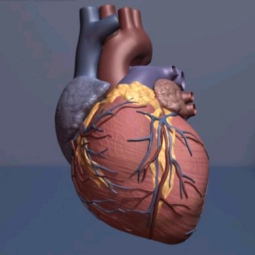






 When it comes to eating, we have strong habits. Some are good ("I always eat breakfast"), and some are not so good ("I always clean my plate"). Although many of our eating habits were established during childhood, it doesn't mean it's too late to change them.
When it comes to eating, we have strong habits. Some are good ("I always eat breakfast"), and some are not so good ("I always clean my plate"). Although many of our eating habits were established during childhood, it doesn't mean it's too late to change them.



